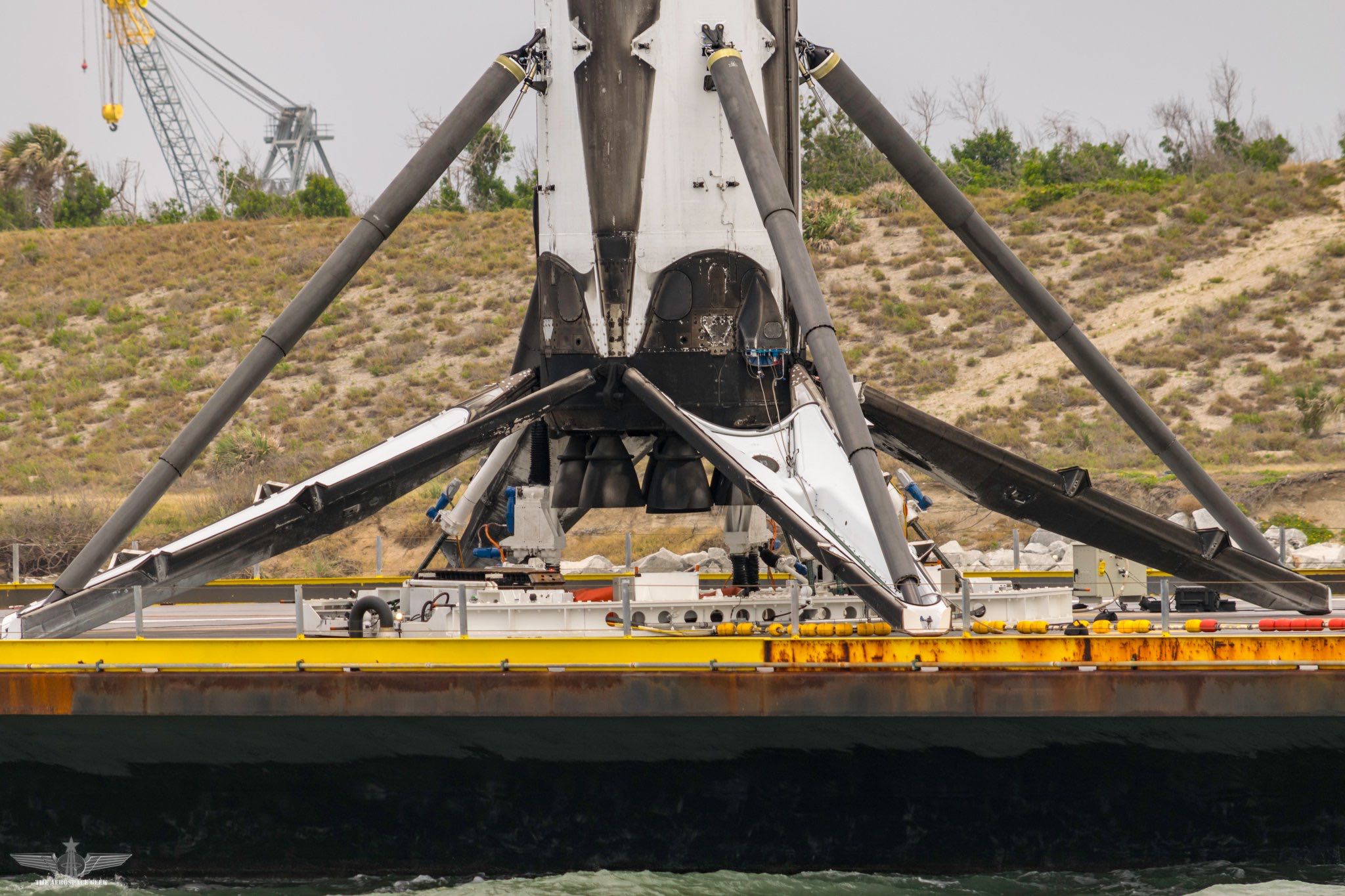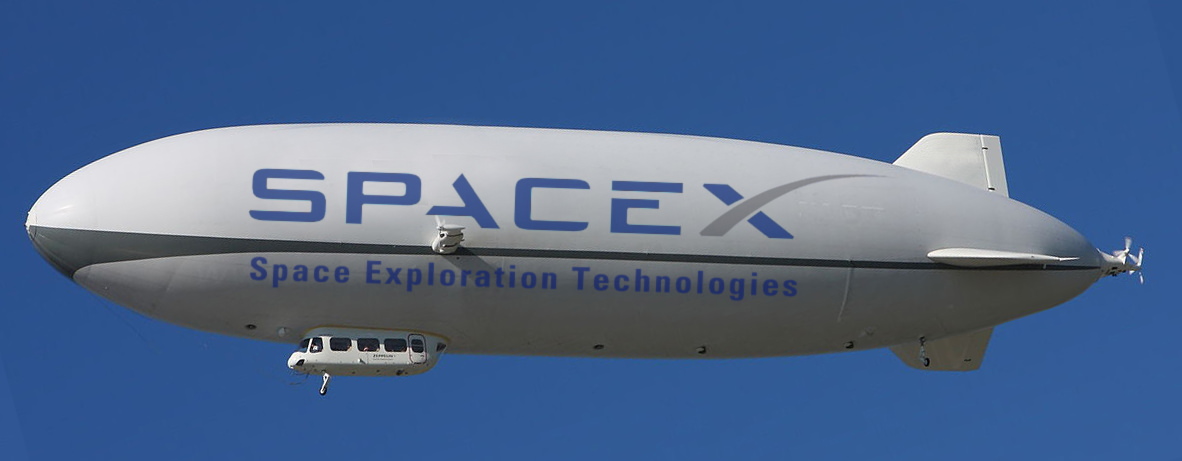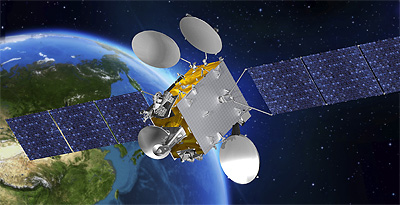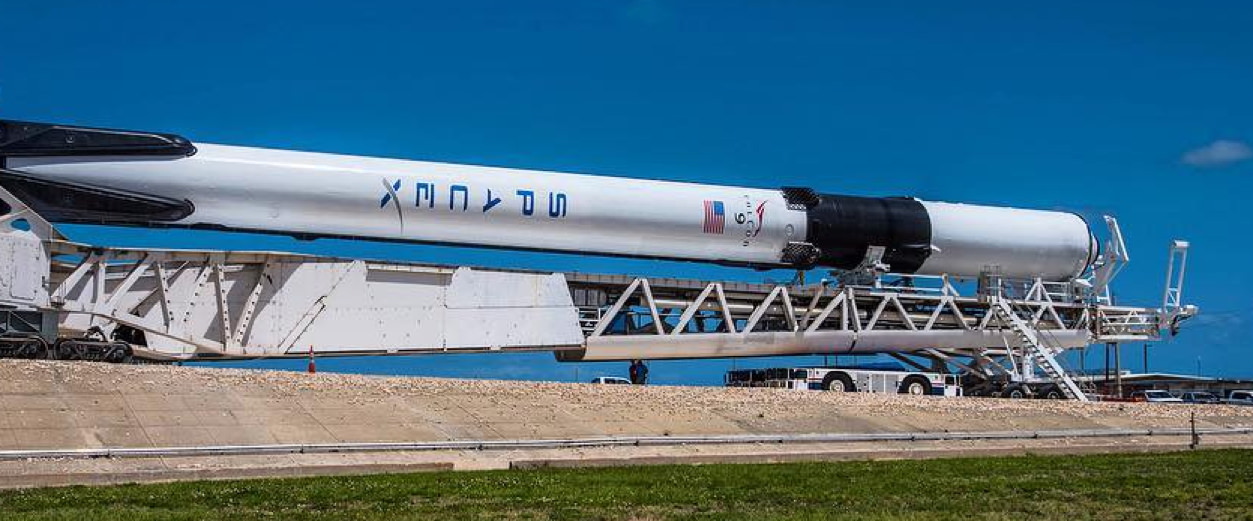Any idea when we might hear about the balloon-aided recovery of the fairing? I imagine it has happened, or not, already, but I'm not on twitter right now.
You are using an out of date browser. It may not display this or other websites correctly.
You should upgrade or use an alternative browser.
You should upgrade or use an alternative browser.
SpaceX Falcon 9 historic landing thread (1st landing attempt & most recent missions)
- Thread starter georgegassaway
- Start date

Help Support The Rocketry Forum:
This site may earn a commission from merchant affiliate
links, including eBay, Amazon, and others.
- Joined
- Jul 23, 2012
- Messages
- 1,899
- Reaction score
- 873
Remind me, this is the last block 4 booster, right? And the next flight will be the first block 5?
- Joined
- Jan 17, 2009
- Messages
- 5,204
- Reaction score
- 1,547
Another great launch, and landing #24.
Nice that they went side by side with the Falcon onboard camera and OCISLY's camera since the ASDS camera signal always gets out out from the exhaust vibration effects on the uplink antenna.
IIRC, the venting after landing was Oxygen (normal venting, just do not recall seeing the view looking down from onboard before).
Yes, this was the last unflown Block 4. It'll get flown again. Next launch in May should be Block 5 (I do not know if there are any other single-flight Block 3/4 boosters left over that may fly again or if they've all been used up on 2nd flights)
Not sure when I'll be back online.
Nice that they went side by side with the Falcon onboard camera and OCISLY's camera since the ASDS camera signal always gets out out from the exhaust vibration effects on the uplink antenna.
IIRC, the venting after landing was Oxygen (normal venting, just do not recall seeing the view looking down from onboard before).
Yes, this was the last unflown Block 4. It'll get flown again. Next launch in May should be Block 5 (I do not know if there are any other single-flight Block 3/4 boosters left over that may fly again or if they've all been used up on 2nd flights)
Not sure when I'll be back online.
Last edited:
That was a treat to see the side by side video on landing. A couple of questions though.
Did SpaceX and NOAA make up?
Also this is the first time I have heard of the "Goldilocks Zone" referred to as the "Habitable Zone". I have heard the "Goldilocks zone described as the "Habitable Zone" but that is distinctly different in my mind. I see the "Goldilocks Zone" as a noun and "Habitable Zone" as an adjective, but it seems this is not the case?
Did SpaceX and NOAA make up?
Also this is the first time I have heard of the "Goldilocks Zone" referred to as the "Habitable Zone". I have heard the "Goldilocks zone described as the "Habitable Zone" but that is distinctly different in my mind. I see the "Goldilocks Zone" as a noun and "Habitable Zone" as an adjective, but it seems this is not the case?
RocketGeekInFL
Well-Known Member
- Joined
- Nov 22, 2013
- Messages
- 3,283
- Reaction score
- 2,984
Back yard view!
View attachment 343008
Yes this was the last block 4 on its maiden flight. We will see this one fly at least one more time.
- Joined
- Jan 17, 2009
- Messages
- 5,204
- Reaction score
- 1,547
OCISLY returned to port with the booster from the TESS mission.
Of note was that the rebuilt Octograbber/Roomba robot was holding it securely to the deck. No cables, no jack stands.
A close-up view.

My WiFi access remains sporadic and limited.
Of note was that the rebuilt Octograbber/Roomba robot was holding it securely to the deck. No cables, no jack stands.
A close-up view.

My WiFi access remains sporadic and limited.
Last edited:
SpaceManMat
Space Nut
- Joined
- Dec 20, 2013
- Messages
- 702
- Reaction score
- 86
Some great video of the returned booster too along with the fairing.
[YOUTUBE]38aFKc7Y3EY[/YOUTUBE]
[YOUTUBE]38aFKc7Y3EY[/YOUTUBE]
Is this the first time the roomba has actually been used to secure the booster?
Do we know if they had a successful fairing dry recovery? Parachutes / balloons? Any video or pictures of the fairing recovery? From the video above I can't tell if they caught it or fished it out of the ocean.
BayouRat
Well-Known Member
Do we know if they had a successful fairing dry recovery? Parachutes / balloons? Any video or pictures of the fairing recovery? From the video above I can't tell if they caught it or fished it out of the ocean.
There have been no succesful dry fairing recoveries to date.
There have been no succesful dry fairing recoveries to date.
In looking at the video, there is something on the deck that sort of looks like a fairing half. did anyone else see it?
rharshberger
Well-Known Member
In looking at the video, there is something on the deck that sort of looks like a fairing half. did anyone else see it?
That's the subject of the last several posts people are wondering if it was a successful recovery ( IE it didn't take a seawater bath) or if it was fished out of the ocean since the recovery ship was right there.
- Joined
- Jan 17, 2009
- Messages
- 5,204
- Reaction score
- 1,547
The only ship capable of "catching" a fairing to keep it dry is "Mr Steven" on the West Coast. It has four huge arms with a big net.
They have had problems with the parachute deployment, and with controllability since apparently the fairing is trying to wobble around due to aerodynamics as the chute tries to steer it.
So, it makes sense to test it out on East Coast launches to work the bugs out, knowing it's going to get wet regardless. Because Mr Steven is never going to catch a fairing until they solve those problems. And they do a LOT more launches from the Cape than Vandenberg, so they can do a test as soon as they can get a revised/modified parachute system ready and put on a Cape launch rather than wait possibly months for the next Vandy launch. Caveat there is that for SOME missions that will barely have enough fuel to do a booster landing, they'd skip the mass of the fairing recovery system.
Also, Musk said that they'd be using a helicopter to do some fairing drop-tests, to work on these deployment and control problems.
They have had problems with the parachute deployment, and with controllability since apparently the fairing is trying to wobble around due to aerodynamics as the chute tries to steer it.
So, it makes sense to test it out on East Coast launches to work the bugs out, knowing it's going to get wet regardless. Because Mr Steven is never going to catch a fairing until they solve those problems. And they do a LOT more launches from the Cape than Vandenberg, so they can do a test as soon as they can get a revised/modified parachute system ready and put on a Cape launch rather than wait possibly months for the next Vandy launch. Caveat there is that for SOME missions that will barely have enough fuel to do a booster landing, they'd skip the mass of the fairing recovery system.
Also, Musk said that they'd be using a helicopter to do some fairing drop-tests, to work on these deployment and control problems.
Last edited:
So, the TESS mission probably tested out some new things, with them observing the effects on descent of the fairing, never meaning to actually catch it since there's no catch ship on the East. Got it! Thanks George. This is a great thread.
rharshberger
Well-Known Member
The only ship capable of "catching" a fairing to keep it dry is "Mr Steven" on the West Coast. It has four huge arms with a big net.
They have had problems with the parachute deployment, and with controllability since apparently the fairing is trying to wobble around due to aerodynamics as the chute tries to steer it.
So, it makes sense to test it out on East Coast launches to work the bugs out, knowing it's going to get wet regardless. Because Mr Steven is never going to catch a fairing until they solve those problems. And they do a LOT more launches from the Cape than Vandenberg, so they can do a test as soon as they can get a revised/modified parachute system ready and put on a Cape launch rather than wait possibly months for the next Vandy launch. Caveat there is that for SOME missions that will barely have enough fuel to do a booster landing, they'd skip the mass of the fairing recovery system.
Also, Musk said that they'd be using a helicopter to do some fairing drop-tests, to work on these deployment and control problems.
I am surprised that Space X isn't using a helicopter to do aerial grabs of the fairings under chute, similar to what was done back in the day by NASA/USAF for satellite film canisters, not sure what the fairings weight though that may be why.
NAR29996
Well-Known Member
I don't know for sure, but I suspect that the range of a helicopter over open ocean might be an issue.
- Joined
- Jan 17, 2009
- Messages
- 5,204
- Reaction score
- 1,547
I am surprised that Space X isn't using a helicopter to do aerial grabs of the fairings under chute, similar to what was done back in the day by NASA/USAF for satellite film canisters, not sure what the fairings weight though that may be why.
HERE is the new airborne fairing capture system they announced 25 days ago:

OK, that was an April Fool's joke I made up a year ago.
The fairings land hundreds of miles out to sea, no copter could fly BACK with such a huge draggy thing without refueling. In theory if a copter was powerful enough to catch one, it could then land the fairing into a nearby ship, for the ship to carry back. But more complex and expensive than what they are trying now. If the self-steering parachute recovery and landing into a net can't be solved, perhaps they'll consider a copter to catch it (and yes it has been done in smaller scale). It'd cost more, but at a grand total of at least $6 million for a fairing set, even if it cost an average of $2 million per flight it'd be well worth it.
Presumably what they have seen with the fairing halves they have gotten back, other than salt water effects, they've not seen any aerodynamic heating or other damage from ascent or re-entry that would affect their practicality for re-use.
Last edited:
rharshberger
Well-Known Member
The fairnings land hundreds of miles out to sea, no copter could fly BACK with such a huge draggy thing without refueling. In theory if a copter was big enogh to catch one, it could then land the faring into a nearby ship, for the ship to carry back
I knew that the fairing were way out to sea, and that a helicopter recovery type event would need to be ship based.
- Joined
- Dec 31, 2009
- Messages
- 4,141
- Reaction score
- 3,477
Winston
Lorenzo von Matterhorn
- Joined
- Jan 31, 2009
- Messages
- 9,560
- Reaction score
- 1,748
Miscellaneous stuff which may have already been posted here, but just in case it hasn't:
Block 5 improvements:
https://www.reddit.com/r/spacex/comments/80m1yd/first_falcon_9_block_5_booster_readying_for/duwpzie/
Titanium grid fins for unlimited re-uses.
New landing legs with the ability to be retracted by the ground crew instead of having to be removed after landing. These legs will also be black instead of white.
Changes to the turbopumps to prevent turbine wheel microfractures. This was never considered a risk by SpaceX but NASA asked SpaceX to fix the issue and from all reports they have.
Replace paint with thermal protection barrier coating for the purposes of re-use.
Improved heat shielding around the engines to improve re-usability.
The octaweb (structure that holds the engines) will be bolted instead of welded, to reduce time for inspection/repair/refurbishment and to allow easy change from F9 to FH side booster.
The interstage will be black instead of white - likely unpainted carbon fiber (saves time and weight).
Upgraded fairing, Fairing 2.0, which is very slightly larger and has changes to allow for recovery and re-use. It is also easier to make and lighter than the previous fairings.
SpaceX's upgraded COPVs (dubbed COPV 2.0) will fly on Block V. This is an upgrade to further reduce the potential for an incident like Amos-6.
Another improvement in thrust for the Merlin 1D engines (roughly 10%).
The rocket will be man-rated, meaning it will be certified to carry crew. NASA has set the bar at 7 successful flights of the rocket for certification.
Upgrades to active components such as valves, as well as many other parts to allow for many re-uses.
Improved flight control, angle-of-attack, and control authority which should allow for landings with less fuel (and therefore the ability to land after lofting heavier payloads).
To summarize, they essentially made many interior parts to a significantly higher durability level, replaced the grid fins and landing legs with versions that are more durable and easier to reuse, significantly improved heat shielding over the entire vehicle - but focusing specifically on the engines - to limit needs for refurbishment, and made the engines easier to inspect/repair/refurbish by bolting instead of welding the octaweb. Then, due to improved flight control authority and thrust, they ensured that they should be able to land more of their missions.
--------
Boeing slams the Falcon Heavy rocket as “too small”
30 Apr 2018
https://arstechnica.com/science/2018/04/boeing-slams-the-falcon-heavy-rocket-as-too-small/
"The Falcon Heavy launch turned heads in February, but SpaceX's rocket is a smaller type of rocket that can't meet NASA's deep-space needs," the website states. "Once the Boeing-built SLS is operational, it will be the most powerful rocket ever built."
The Boeing site backs up this claim by quoting NASA's Bill Gerstenmaier, who talked about the differences between the SLS rocket and Falcon Heavy at a meeting of the NASA Advisory Council meeting in March. Gerstenmaier, the chief of NASA's human spaceflight program, said the SLS had "unique capabilities" that the Falcon Heavy rocket does not have. (Absolutely! The "unique capability" to burn up $1 BILLION per launch to launch a yet to be determined something to somewhere using a 100% disposable booster core. - W) However, as Ars Technica reported at the time, Gerstenmaier actually struggled to explain why NASA needed the SLS rocket because the space agency has not yet built anything that will take advantage of those capabilities.
https://www.nbcnews.com/mach/science/spacex-s-falcon-feat-may-be-just-prelude-main-event-ncna846446
Feb 9, 2018
SpaceX says the Falcon Heavy will cost about $90 million per launch... In contrast, NASA's SLS will cost a whopping $1 billion per launch, according to former NASA deputy administrator Lori Garver.
--------
This is what a payload fairing looks like as it returns from space
Reusing fairings would allow SpaceX to focus more on its next-generation rocket.
5/2/2018
https://arstechnica.com/science/201...-fairing-looks-like-as-it-returns-from-space/
On Tuesday night, SpaceX founder Elon Musk shared a photo of one half of a payload fairing opening its parafoil after re-entering Earth's atmosphere. In his Instagram post, Musk did not specify which mission this photo is from.
After experimenting with how to control the fairing during its return through the atmosphere in 2017, SpaceX had enough confidence to hire a boat named Mr. Steven to try to catch the fairings as they fell into the Pacific Ocean. During the PAZ launch in February, the fairing narrowly missed the boat but achieved a soft water landing. During a launch of Iridium satellites in March, the parafoil twisted, and the fairing again missed the boat.
As the Mr. Steven is located on the West Coast, SpaceX has only attempted such fairing recoveries during launches from Vandenberg Air Force Base, north of Los Angeles. The next of these is scheduled for no earlier than May 19, when SpaceX launches another batch of Iridium satellites.
https://cdn.arstechnica.net/wp-content/uploads/2018/05/payload-fairing-800x512.jpg
Block 5 improvements:
https://www.reddit.com/r/spacex/comments/80m1yd/first_falcon_9_block_5_booster_readying_for/duwpzie/
Titanium grid fins for unlimited re-uses.
New landing legs with the ability to be retracted by the ground crew instead of having to be removed after landing. These legs will also be black instead of white.
Changes to the turbopumps to prevent turbine wheel microfractures. This was never considered a risk by SpaceX but NASA asked SpaceX to fix the issue and from all reports they have.
Replace paint with thermal protection barrier coating for the purposes of re-use.
Improved heat shielding around the engines to improve re-usability.
The octaweb (structure that holds the engines) will be bolted instead of welded, to reduce time for inspection/repair/refurbishment and to allow easy change from F9 to FH side booster.
The interstage will be black instead of white - likely unpainted carbon fiber (saves time and weight).
Upgraded fairing, Fairing 2.0, which is very slightly larger and has changes to allow for recovery and re-use. It is also easier to make and lighter than the previous fairings.
SpaceX's upgraded COPVs (dubbed COPV 2.0) will fly on Block V. This is an upgrade to further reduce the potential for an incident like Amos-6.
Another improvement in thrust for the Merlin 1D engines (roughly 10%).
The rocket will be man-rated, meaning it will be certified to carry crew. NASA has set the bar at 7 successful flights of the rocket for certification.
Upgrades to active components such as valves, as well as many other parts to allow for many re-uses.
Improved flight control, angle-of-attack, and control authority which should allow for landings with less fuel (and therefore the ability to land after lofting heavier payloads).
To summarize, they essentially made many interior parts to a significantly higher durability level, replaced the grid fins and landing legs with versions that are more durable and easier to reuse, significantly improved heat shielding over the entire vehicle - but focusing specifically on the engines - to limit needs for refurbishment, and made the engines easier to inspect/repair/refurbish by bolting instead of welding the octaweb. Then, due to improved flight control authority and thrust, they ensured that they should be able to land more of their missions.
--------
Boeing slams the Falcon Heavy rocket as “too small”
30 Apr 2018
https://arstechnica.com/science/2018/04/boeing-slams-the-falcon-heavy-rocket-as-too-small/
"The Falcon Heavy launch turned heads in February, but SpaceX's rocket is a smaller type of rocket that can't meet NASA's deep-space needs," the website states. "Once the Boeing-built SLS is operational, it will be the most powerful rocket ever built."
The Boeing site backs up this claim by quoting NASA's Bill Gerstenmaier, who talked about the differences between the SLS rocket and Falcon Heavy at a meeting of the NASA Advisory Council meeting in March. Gerstenmaier, the chief of NASA's human spaceflight program, said the SLS had "unique capabilities" that the Falcon Heavy rocket does not have. (Absolutely! The "unique capability" to burn up $1 BILLION per launch to launch a yet to be determined something to somewhere using a 100% disposable booster core. - W) However, as Ars Technica reported at the time, Gerstenmaier actually struggled to explain why NASA needed the SLS rocket because the space agency has not yet built anything that will take advantage of those capabilities.
https://www.nbcnews.com/mach/science/spacex-s-falcon-feat-may-be-just-prelude-main-event-ncna846446
Feb 9, 2018
SpaceX says the Falcon Heavy will cost about $90 million per launch... In contrast, NASA's SLS will cost a whopping $1 billion per launch, according to former NASA deputy administrator Lori Garver.
--------
This is what a payload fairing looks like as it returns from space
Reusing fairings would allow SpaceX to focus more on its next-generation rocket.
5/2/2018
https://arstechnica.com/science/201...-fairing-looks-like-as-it-returns-from-space/
On Tuesday night, SpaceX founder Elon Musk shared a photo of one half of a payload fairing opening its parafoil after re-entering Earth's atmosphere. In his Instagram post, Musk did not specify which mission this photo is from.
After experimenting with how to control the fairing during its return through the atmosphere in 2017, SpaceX had enough confidence to hire a boat named Mr. Steven to try to catch the fairings as they fell into the Pacific Ocean. During the PAZ launch in February, the fairing narrowly missed the boat but achieved a soft water landing. During a launch of Iridium satellites in March, the parafoil twisted, and the fairing again missed the boat.
As the Mr. Steven is located on the West Coast, SpaceX has only attempted such fairing recoveries during launches from Vandenberg Air Force Base, north of Los Angeles. The next of these is scheduled for no earlier than May 19, when SpaceX launches another batch of Iridium satellites.
https://cdn.arstechnica.net/wp-content/uploads/2018/05/payload-fairing-800x512.jpg
- Joined
- Jan 17, 2009
- Messages
- 5,204
- Reaction score
- 1,547
Bangabandhu-1 launch is planned for Monday May 7th (Update - Now Delayed). Window opens at 4:06 PM, EDT. The launch date had been in some uncertainty after Friday’s test firing. It had seemed like it would slip but latest info is that it is ON for Monday. For now.
UPDATE: New official launch date: Thursday the 10th, Launch Window 4:12 PM EDT to 6:22 PM EDT.
First launch from Pad 39A since Falcon Heavy. Booster will go for an ASDS landing on OCISLY.
Article about the mission, Bangladesh’s first satellite:
https://www.nasaspaceflight.com/2018/05/first-block-5-falcon-9-static-fire-bangabandhu-1/
Wiki about the satellite: https://en.wikipedia.org/wiki/Bangabandhu-1

This is the first launch of the Block 5 Falcon. It has had various modifications to improve performance and is supposed to allow it to be flown ten times before significant refurbishment, There have been posts with more info about it in this thread, including Winston's above.
As I type this, there is no link to the Webcast yet.
Below is an image from last week with the booster being rolled out to the pad. The black area between the first stage’s tanks and second stage is the carbon composite interstage attached to the booster (previously was coated white). The interstage, landing leg fairings, and raceways are coated with a black Thermal Protection System (TPS) that seems to be used only on the carbon composite parts of the booster.

UPDATE: New official launch date: Thursday the 10th, Launch Window 4:12 PM EDT to 6:22 PM EDT.
First launch from Pad 39A since Falcon Heavy. Booster will go for an ASDS landing on OCISLY.
Article about the mission, Bangladesh’s first satellite:
https://www.nasaspaceflight.com/2018/05/first-block-5-falcon-9-static-fire-bangabandhu-1/
Wiki about the satellite: https://en.wikipedia.org/wiki/Bangabandhu-1

This is the first launch of the Block 5 Falcon. It has had various modifications to improve performance and is supposed to allow it to be flown ten times before significant refurbishment, There have been posts with more info about it in this thread, including Winston's above.
As I type this, there is no link to the Webcast yet.
Below is an image from last week with the booster being rolled out to the pad. The black area between the first stage’s tanks and second stage is the carbon composite interstage attached to the booster (previously was coated white). The interstage, landing leg fairings, and raceways are coated with a black Thermal Protection System (TPS) that seems to be used only on the carbon composite parts of the booster.

Last edited:
RocketGeekInFL
Well-Known Member
- Joined
- Nov 22, 2013
- Messages
- 3,283
- Reaction score
- 2,984
- Joined
- Jul 23, 2012
- Messages
- 1,899
- Reaction score
- 873
Do we know if the shroud has maneuvering thrusters?
And... wouldn't it be more stable if they got rid of the pinch point in the harness? Just run each shroud line from a point on the lip of the fairing directly to a point on the periphery of the... what are they calling this, anyway? What name are they using for it? 'Parachute'?
By my (admittedly not vast) understanding, that pinch point they have virtually guarantees wobble, right? Just take it out. Wouldn't that be more stable?
And... wouldn't it be more stable if they got rid of the pinch point in the harness? Just run each shroud line from a point on the lip of the fairing directly to a point on the periphery of the... what are they calling this, anyway? What name are they using for it? 'Parachute'?
By my (admittedly not vast) understanding, that pinch point they have virtually guarantees wobble, right? Just take it out. Wouldn't that be more stable?
- Joined
- Oct 25, 2016
- Messages
- 282
- Reaction score
- 172
...
Last edited:
- Joined
- Jan 17, 2009
- Messages
- 5,204
- Reaction score
- 1,547
Do we know if the shroud has maneuvering thrusters?
And... wouldn't it be more stable if they got rid of the pinch point in the harness? Just run each shroud line from a point on the lip of the fairing directly to a point on the periphery of the... what are they calling this, anyway? What name are they using for it? 'Parachute'?
By my (admittedly not vast) understanding, that pinch point they have virtually guarantees wobble, right? Just take it out. Wouldn't that be more stable?
Has limited low thrust thrusters (Nitrogen, IIRC) to help orient the fairing half for re-entry into the atmosphere. Impractical for yaw control during parafoil descent even if it had unlimited nitrogen.

I was surprised to see in the photo (cropped and enlarged above) that indeed having the lines pinch in like that, really makes the wobble/rotation problems a lot worse. Indeed in that photo it looks like the fairing is pointed way different in yaw orientation than the parachute is.
I expected to see at least a few "guy wire"-like lines that would run from say the outer left edge of the fairing to the outer left edge of the parafoil, and same for the right side. Although there could be some other unwanted effects on the parafoil stability and control, too much of a "pull" by a line like that could cause unwanted steering effects if there is not any ideal neutral location to attach such a line near the outer end of the parafoil (after all, the chute is steered by lines going to the aft corners of the parafoil, pull the line to the left aft corner down a bit and the chute steers to the left. Pull left AND right down and it flares for landing... if done right).
If they stick with the pinched-in lines, Some ways of trying to keep the fairing half pointed into the oncoming airflow could be to add a drag chute to the back of the fairing (simple but draggy), or some sort of "rudder" (more effective but more complex/heavier). There's supposed to be some helicopter drop-tests of a full sized fairing (maybe using a retrieved faring half that got wet?) to work on the problem. But I have GOT to think they'd learn a whole lot more a whole lot faster by using dynamically scaled-down models using R/C, either dropped from a very tall structure or dropped from a helicopter. THEN when they get something to work well in model form, replicate it full size and do the helicopter drops.
A tried and true method, NASA even did that with Apollo. Used models in a Vertical Wind Tunnel to test out CM recovery system models/chutes.
Start at 28:50 in this documentary:
https://www.youtube.com/watch?v=slUwVZJSVPY&feature=youtu.be&t=1730
[video=youtube;slUwVZJSVPY]https://www.youtube.com/watch?v=slUwVZJSVPY[/video]
Last edited:
- Joined
- Jan 17, 2009
- Messages
- 5,204
- Reaction score
- 1,547
Still on for Thursday the 10th, window opens at 4:12 PM EDT. First Block 5 flight:
PRESSKIT LINK: https://www.spacex.com/sites/spacex/files/bangabandhupresskit5918.pdf
PATCH:

WEBCAST:
[video=youtube;yYJWeK-kVB0]https://www.youtube.com/watch?v=yYJWeK-kVB0[/video]
SpaceX is targeting launch of Bangabandhu Satellite-1 on Thursday, May 10 from Launch Complex 39A (LC-39A) at NASA’s Kennedy Space Center, Florida. The launch window opens at 4:12 p.m. EDT, or 20:12 UTC, and closes at 6:22 p.m. EDT, or 22:22 UTC. A backup launch window opens on Friday, May 11 at 4:14 p.m. EDT, or 20:14 UTC, and closes at 6:21 p.m. EDT, or 22:21 UTC. Bangabandhu Satellite-1 will be deployed into a geostationary transfer orbit (GTO) approximately 33 minutes after launch.
The Bangabandhu Satellite-1 mission will be the first to utilize Falcon 9 Block 5, the final substantial upgrade to SpaceX’s Falcon 9 launch vehicle. Falcon 9 Block 5 is designed to be capable of 10 or more flights with very limited refurbishment as SpaceX continues to strive for rapid reusability and extremely high reliability. Following stage separation, SpaceX will attempt to land Falcon 9’s first stage on the “Of Course I Still Love You” droneship, which will be stationed in the Atlantic Ocean.
PRESSKIT LINK: https://www.spacex.com/sites/spacex/files/bangabandhupresskit5918.pdf
PATCH:
WEBCAST:
[video=youtube;yYJWeK-kVB0]https://www.youtube.com/watch?v=yYJWeK-kVB0[/video]
Last edited:
Rats. I should be in an airplane after having just left Denver on the way to Dulles to help at the TARC finals at that time. Last time I tried SWA’s in-flight internet it wasn’t worth the trouble...so I guess I’ll have to look at replays tomorrow evening after I get to my room in Virginia.
Similar threads
- Replies
- 5
- Views
- 612
- Replies
- 7
- Views
- 581
- Replies
- 29
- Views
- 2K
- Replies
- 6
- Views
- 2K





